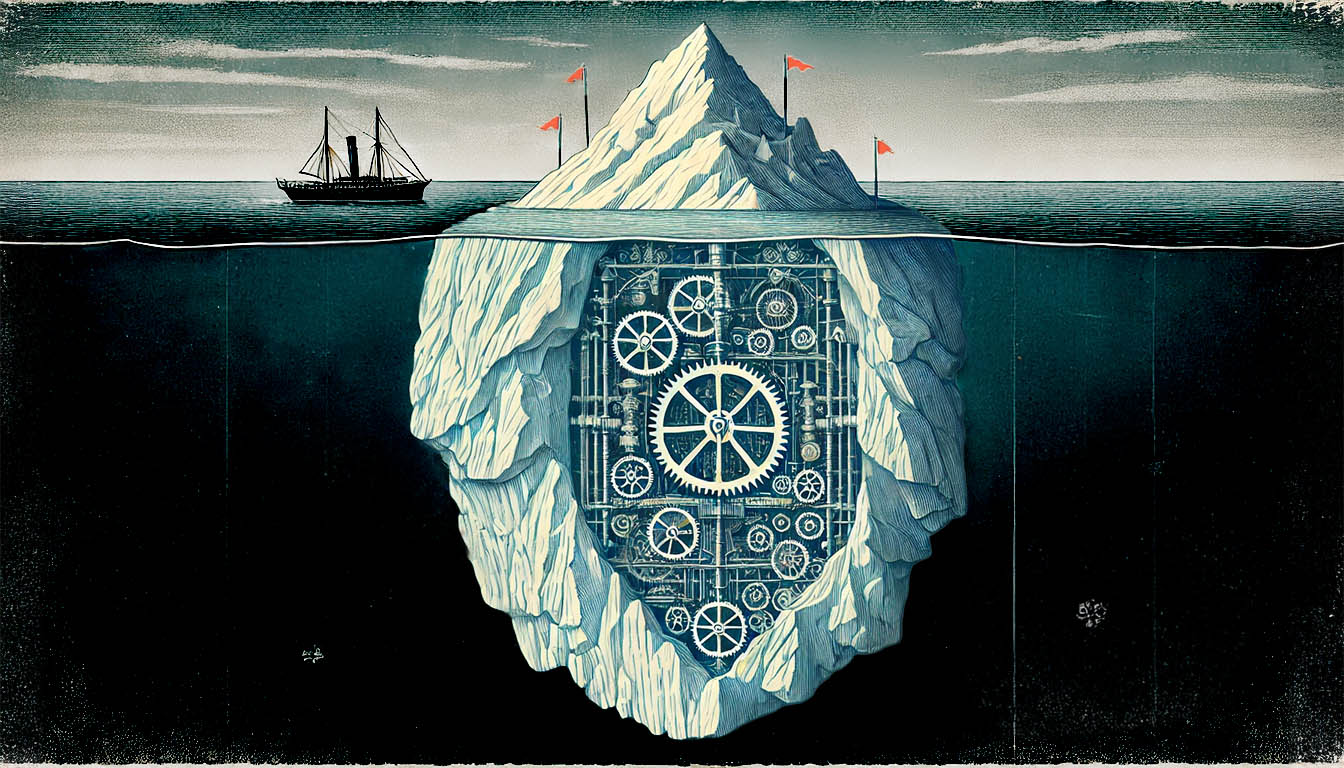We marketers are busy people — hunting for perfect keyword opportunities, juggling a bloated MarTech stack, trying to stay ahead of ChatGPT, explaining the ROI of thought leadership to the CFO — the to-do list goes on.
Most of us also have a weakness for shiny objects: a new tool, a magic strategy, an unmissable trend. It comes with the territory. We can’t miss the next big thing that might unlock more growth.
Amidst this combo of busyness and FOMO, you might have overlooked — or dismissed — a simple, unsexy, but effective growth engine: milestone marketing.
Not the Art of the Boring Birthday Post
When you hear “milestone marketing,” you might think of those cringe company birthday posts you speed past in your LinkedIn feed. But this approach isn’t about patting yourself on the back or celebrating arbitrary anniversaries.
Effective milestone marketing turns business achievements into moments that resonate with your audience. When done right, it’s one of the easiest ways to create content that delivers momentum, trust, and growth.
Build and Maintain Trust
Milestones signal progress and stability. They reassure potential and existing customers that they’re betting on a winner with proof of your company’s growth and success. This validation builds confidence in your product and strengthens customer relationships.
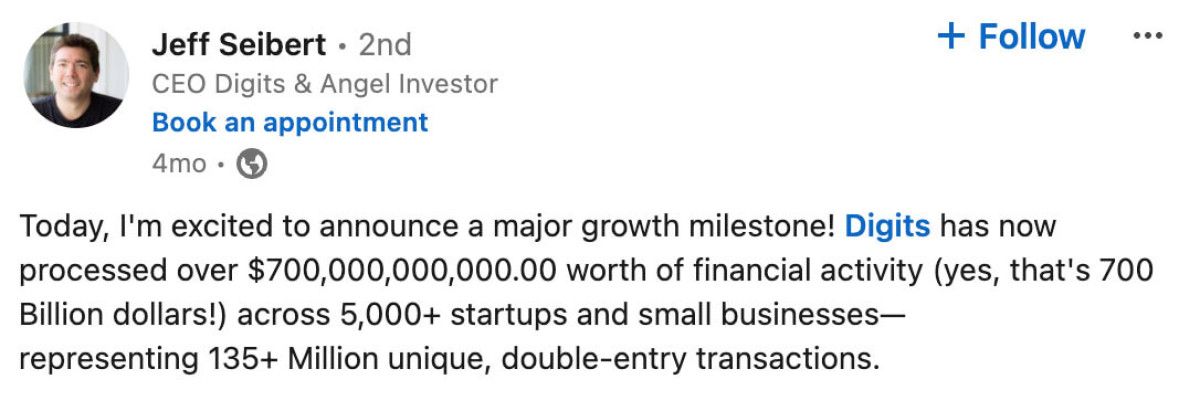
Create Momentum Across Stakeholders
We like to say that growth is about “momentum, momentum, momentum.” Well-timed milestone announcements energize your ecosystem and create a sense of inevitability about the company’s growth. They motivate your team, attract new talent, generate investor interest, and get you press coverage.
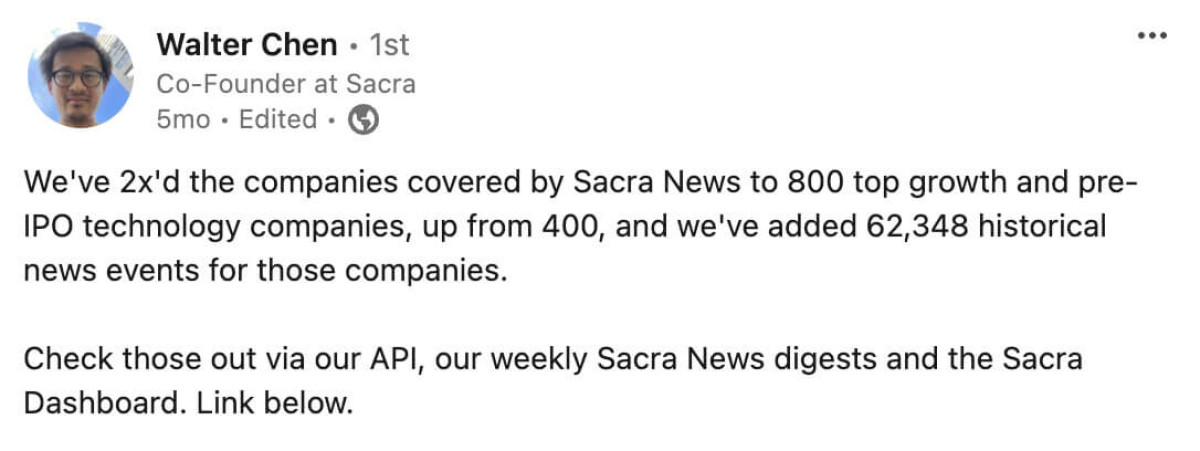
Milestones also give your supporters and constituents something to celebrate with you! 🥳 Such celebrations strengthen their connection to your brand and make them feel part of a growing, winning team.
Boost Your Brand
Each milestone can amplify your story, values, and culture. They’re natural opportunities to reinforce what your company is all about, helping you connect with your audience and differentiate yourself from competitors.
Fuel Your Content Calendar
Milestones are natural content generators. They provide topics for blog posts, social media updates, and email newsletters. They also offer a fresh angle to communicate your product’s benefits without sounding sales-y.
Enjoy a Quick Win
Most marketing initiatives require lots of thought, time, and resources — milestones don’t. They’re a straightforward tactic that works without extraordinary feats of creativity, strategic thinking, or production.
Voilà, Your B2B SaaS Milestone Menu
From product triumphs to community achievements, there’s a milestone to suit every taste and business stage. Think of this overview as a recipe book — each option offers a unique opportunity to spice up your marketing strategy.
Product Usage Metrics
Celebrating usage of your product sends several messages:
You focus attention on an essential feature, benefit, or metric related to your product.
Existing users and other stakeholders (like investors) feel like they’re part of a winning “team.”
Potential customers or those using a competing product experience FOMO.
You instill fear in your competitors. 😈
Lithic’s celebration of a billion dollars in transaction volume is a great example that hits on all these points. It’s an impressive number and highly relevant to what the business is about.
Other relevant usage metrics can include usage time (e.g., total hours of meditation for a meditation app), number of actions taken (e.g., number of documents signed for an e-signature company), or data-related stats (e.g., amount of data processed, number of API calls handled).
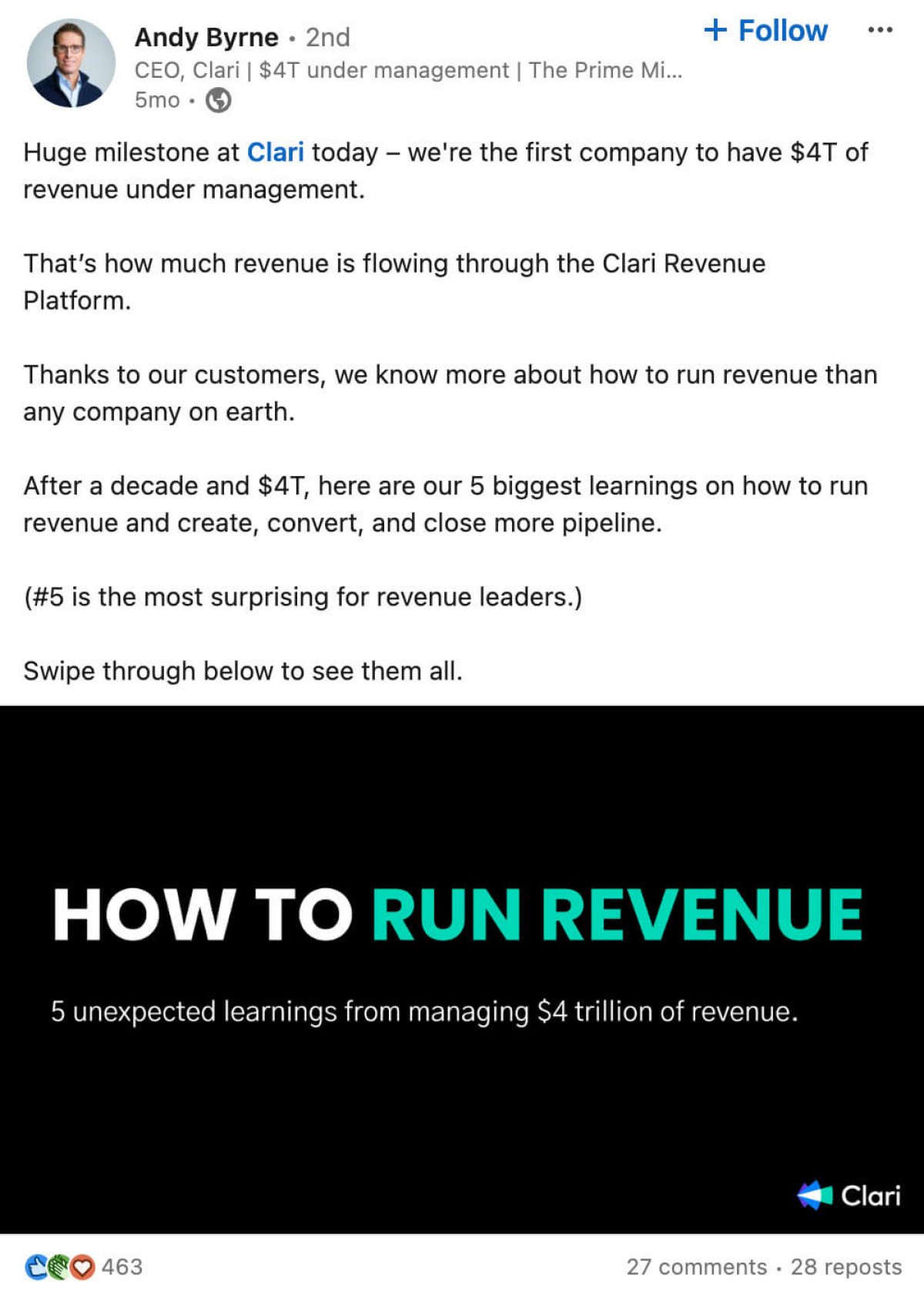
User Milestones
User milestones are a great opportunity to signal that your product is popular and has momentum. Examples of such milestones include:
Number of customers (e.g., 100th customer, 1000th customer)
User growth (e.g., doubling user base)
For example, when I ran global marketing at KaiOS, a mobile operating system, we regularly celebrated our rapidly growing user numbers, primarily to convince big companies like Meta, Google, and telcos to partner with us.
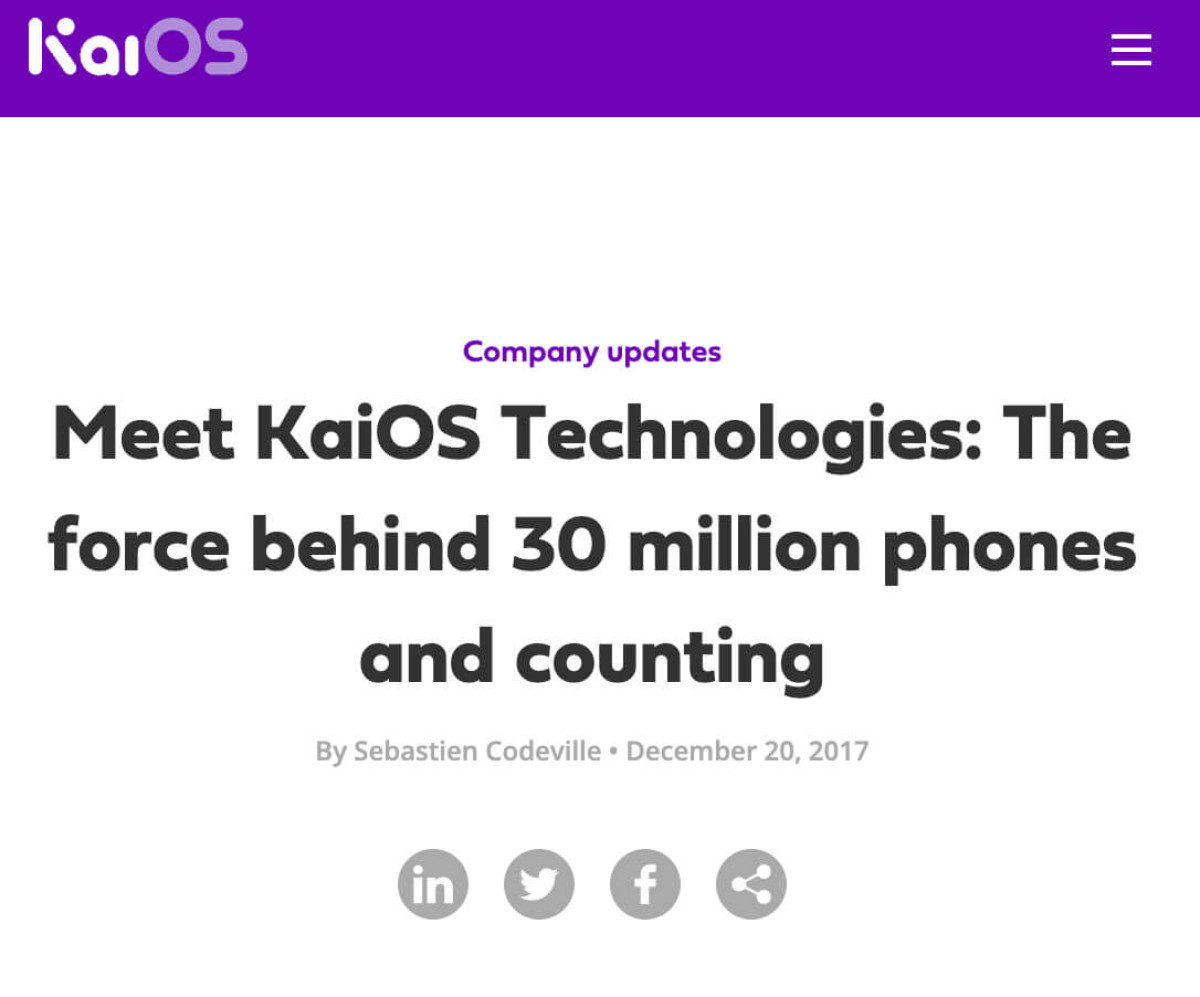
Product Milestones
Improvements and expansions of your product are ideal milestones to market; they’re of interest to most or all of your customers. Think:
Feature releases: Introduction of new functionalities (e.g., Slack adding Huddles for audio conversations)
Major updates: Significant overhauls or improvements to the core product (e.g., Notion’s AI integration across the platform)
Platform expansions: Launching new products or entering new verticals (e.g., HubSpot expanding from marketing to sales and service hubs)
Promoting product milestones comes naturally to most founders, and Christophe Pasquier of Slite is a great example — many of his posts are about new features his team has shipped.

These types of updates can even work for service businesses like our agency. Below is Ty Magnin, our CEO, creating buzz on LinkedIn around our new customer reports.
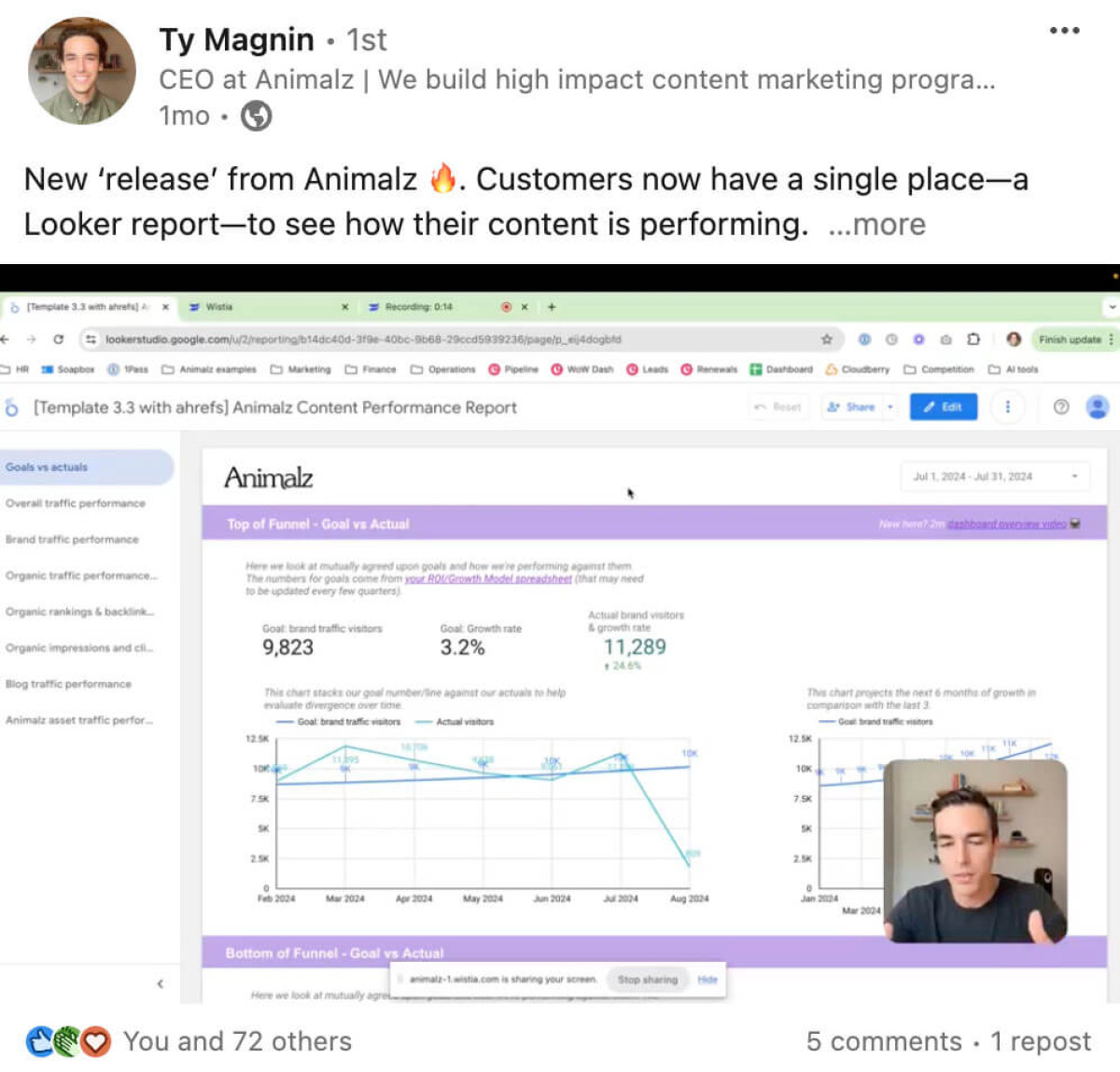
Partnership or Community Milestones
Partnerships and community growth demonstrate widespread investment in your product. Examples of such milestones:
Reaching follower milestones on social media platforms (e.g., 10,000 Twitter followers)
Growing your user community (e.g., 5,000 members in your Slack community)
Launching significant partnerships (e.g., integration with a major platform)
Achieving joint milestones with partners (e.g., 1 million API calls processed together)
Zapier regularly celebrates new app integrations, which shows its expanding ecosystem and product usefulness.
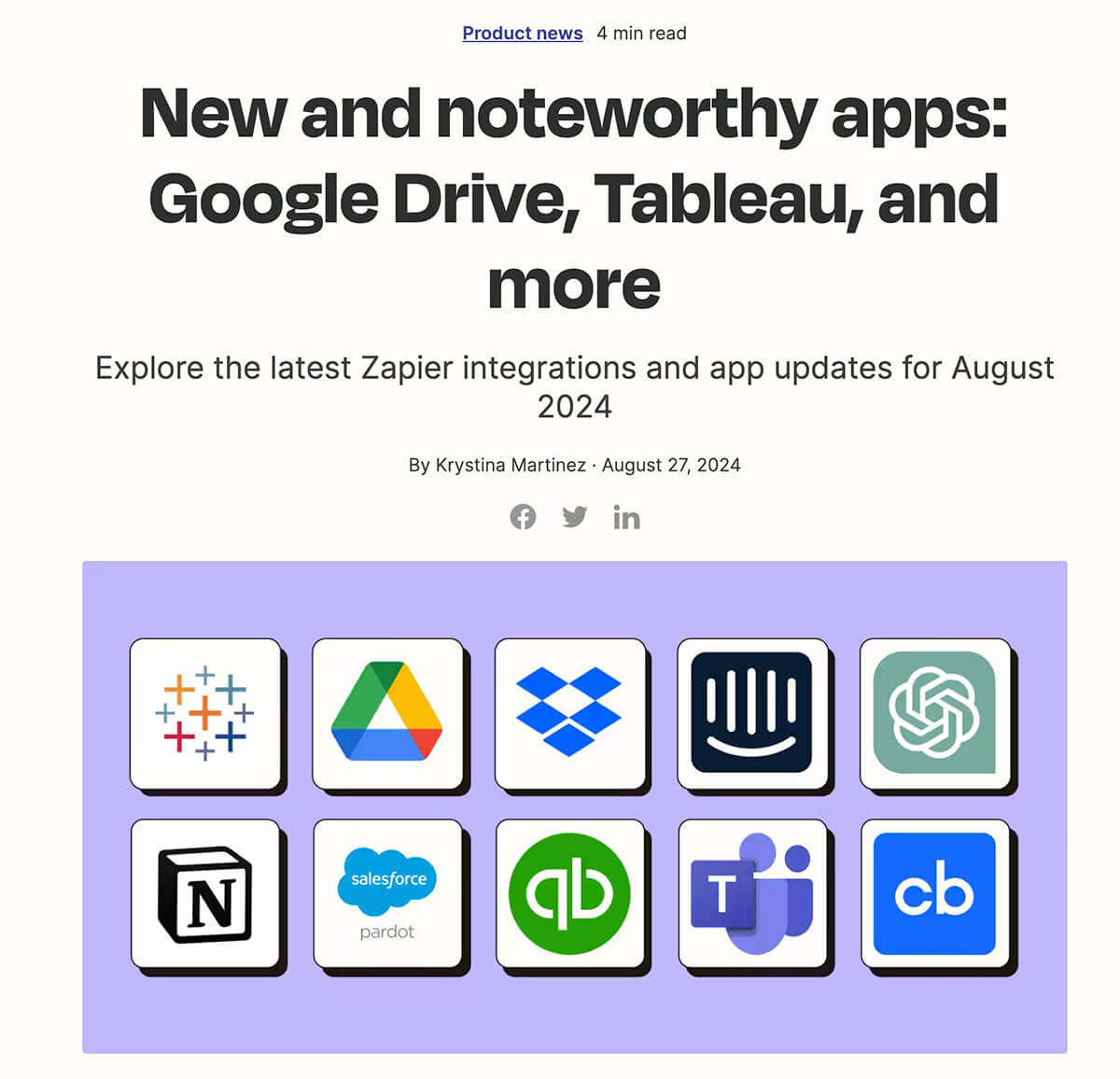
Industry Recognition
Validation by others boosts your credibility more than anything you say yourself. Celebrate when you receive:
Industry awards (e.g., “Best SaaS Product of the Year”)
Inclusion in analyst reports (e.g., being named a leader in Gartner’s Magic Quadrant)
High-profile customer testimonials or case studies
Media recognition (e.g., being featured in a major publication, like TechCrunch or The Wall Street Journal)
⚠️ Awards can’t distort reality and will backfire if they’re meaningless. My bank is a great example: They’re constantly touting some “Best Bank” award while I’m slogging through their horrible user experience — leaving me to scoff at their latest announcement.
Funding Rounds and Financial Milestones
Financial achievements show your company’s growth and stability to customers, investors, and competitors. Typical events include:
Revenue landmarks (e.g., first $1 million in ARR, crossing $10 million ARR)
Profitability achievements (e.g., reaching cash flow positive)
Funding and valuation milestones (e.g., announcing a Series A of $12 million, achieving unicorn status)
⚠️ Funding and financial milestones verge on anniversary post territory. Raising a bunch of millions might mean the world to you but little to your average user; they just want a great app or service experience. They can even feel insulted by your staggering valuation while they’re parting with hard-earned cash to use your product.
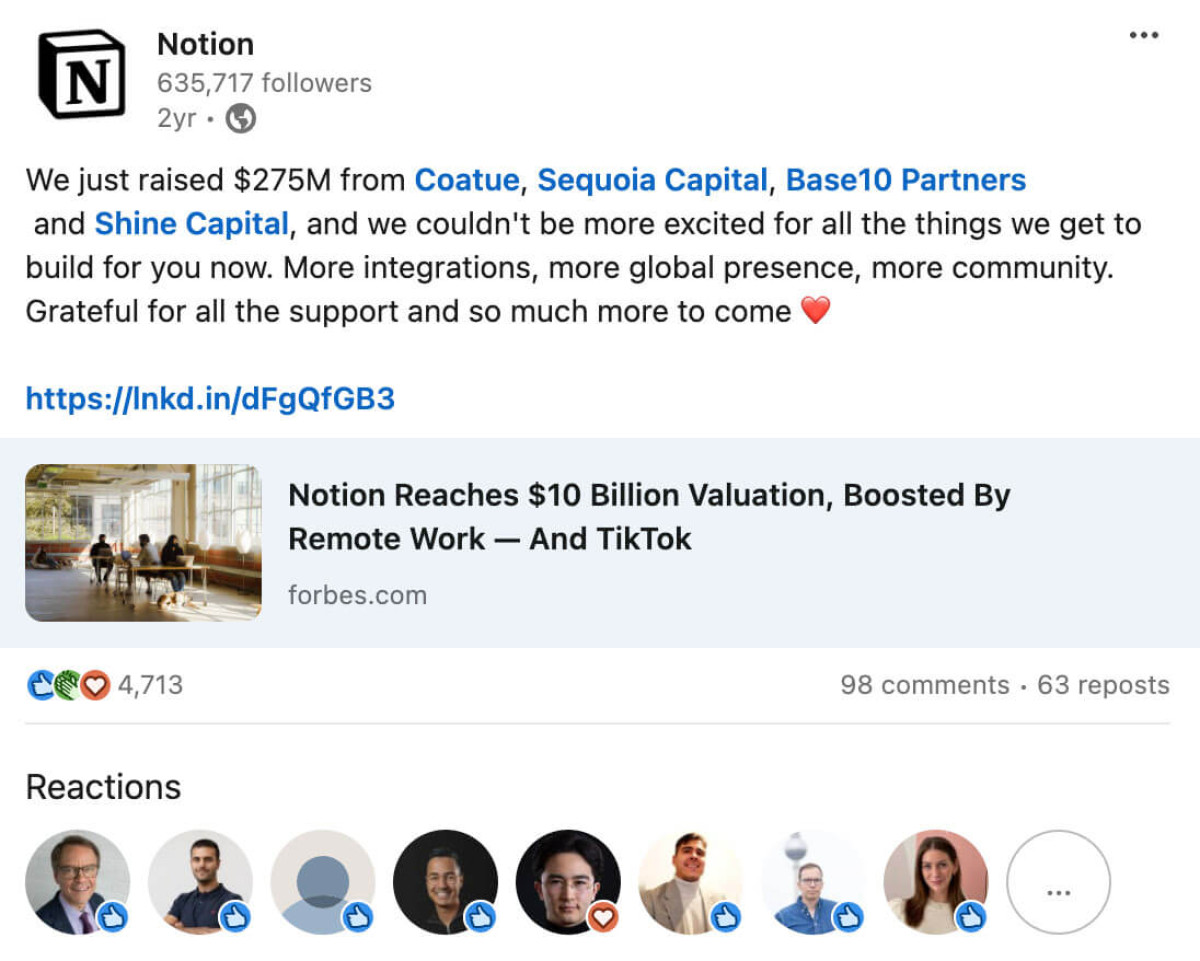
Company Anniversaries
In rare cases, a birthday is the right event to celebrate — typically when your brand’s age reaches double digits, and you want to convey longevity and stability to your stakeholders.
Fire Up Your Milestone Engine
I can’t help repeating: milestone marketing isn’t rocket science. The only real challenge is that it requires some upfront planning. But follow the steps below, and your milestone marketing engine will practically drive itself.
Find and Track the Right Milestones
You need to identify which milestones make sense for your business to celebrate, then make sure you have a system in place for keeping track of them.
Identify Milestones
Use our earlier Milestone Menu to pick categories that are relevant to your company. For example, for a marketing agency like us, user numbers aren’t the thing to communicate, but they’re perfect for product-led companies.
A well-defined North Star metric, OKRs, or other KPIs are also great sources of inspiration for milestone marketing. Take the earlier example of Lithic’s transaction volume reaching $1 billion: it’s likely that this number also represents a core metric the team tracks internally.
Track and Anticipate Milestones
A major reason for missing milestones is lack of planning: you become aware of them too late or not at all. Fixing this isn’t hard but requires you to set up some communication lines and tracking:
Create and integrate a milestone tracker: Set up a spreadsheet or use your project management tool to list potential upcoming milestones. Include categories like product releases, user growth targets, and financial goals. Connect this tracker with other tools your company uses, such as your product roadmap, CRM, or OKR software.
Set up a monitoring system: Create notifications for when you approach meaningful targets. Use your project management tool to set reminders for regularly checking milestone progress (e.g., monthly or quarterly reviews).
Regularly talk to other teams: Check in with product about the roadmap, but also departments like sales or HR about their goals and achievements. We recommend you don’t rely on others to come to you; this often doesn’t happen as they have other priorities.
Match Milestones With Your Audience and Channels
Effective milestone marketing requires selectivity and relevance. Not every achievement deserves an announcement, and those that do shouldn’t go on every channel.
Still, marketing 101 applies here, too: know your audience, then meet them where they are. Ask yourself:
To whom in my ecosystem does this milestone matter?
How’s it relevant to their experience?
What’s the most appropriate and convenient channel for them to receive this message?
As an example, let’s consider two types of milestones: an important new product feature and a fresh round of funding for your startup. The product feature warrants an email to your user base since it’s something they can use and get value from immediately.
In many cases, the funding round shouldn’t get an email blast to all your customers (unless they have reason to be concerned about your cash flow). A subtle social post like Notion’s earlier example is more appropriate.

Don’t Forget About Personal Social Channels
Make sure to consider the social accounts of founders, executives, and other team members who are willing to share company achievements. And don’t just look at their follower numbers. Some messages will fit a specific role, like a VP of product, and can reach an important niche within your audience.
Give Milestones the Attention They Deserve
Some milestones work as just a casually drafted text post from the CEO, others need support from visuals or other assets. This is also why planning is important: you need to have sufficient time to get such supporting materials ready.
Take Lithic’s earlier example about celebrating one billion dollars in charge card transaction volume. Without the chart, the message would have had much less impact.
At the same time, don’t overdo it. The beauty of milestone marketing is that it’s straightforward but effective. You can usually make it work without having to invest an unreasonable amount of resources — better to save those for more strategic marketing initiatives.
Are You Ready for Your Next Milestone?
Milestone marketing requires you to walk a fine line between humility and hubris. You can’t understate your achievements, but overstating them also turns people off.
It’s actually not that different from throwing a party. A good host is present but not overly so. They provide a reason to celebrate but don’t make the event about themselves — they’re focused on making sure the guests have a good time.
The effective examples we’ve seen of milestone marketing are similar: there’s a reason to celebrate, but the message speaks to or even involves customers and other stakeholders — it’s not only about the brand.
Keep this in mind, and you’re ready to turn your next milestone into your next big marketing win.
